Mosses are misfits in the plant kingdom. Unlike flowering plants, they do not produce flowers, bear seeds, or even have true roots. With simple structures that mimic roots in function, they anchor themselves to stone, bark, and tile, absorbing water directly through their skin. Neither grand nor obvious, they are persistent forces, clinging to the edges of things. They drink the mist. They wait for the rain. Their tenaciousness has allowed them to thrive in damp environments for over 400 million years.
Despite their simple form, mosses have played an outsized role in the story of life on Earth. They were among the first plants to colonize land. Their ancestors likely evolved from green algae, and as they adapted to terrestrial life, they developed ways to prevent drying out, to protect their tissues from UV light, and to disperse spores through the air. They laid the groundwork for the complex kingdom of terrestrial plants that would follow. Before forests, before flowers, before the idea of fruit, there were mosses.
Together with liverworts and hornworts, mosses make up a group known as bryophytes. Today, we lavish our attention on angiosperms, the flowering plants that provide us with food, medicine, and materials. But to understand how modern plants came to be, we must look back to mosses. In many ways, the world we know grew from these quiet, pioneering experiments in land-based life.
Globally, there are about 12,000 species of true mosses, with around 1,300 found in Japan. Thanks to the country’s humid, rainy climate and abundance of shaded landscapes, Japan is one of the best places in the world to observe mosses. Some species grow where little else can, even in cracks in concrete. In dry periods, mosses shrink and appear lifeless, but with the first sign of rain, they rapidly rehydrate and turn green again.
In Japan, mosses cover temple gardens, shrine paths, and old stone lanterns. The soft, green carpets seen in Kyoto’s gardens are usually true mosses (Bryopsida), valued for their even growth and gentle texture. Haircap moss (Polytrichum juniperinum, or sugigoke), Hypnum moss (Hypnum plumaeforme, or haigoke), and Thuidium moss (Thuidium delicatulum or kotsubogoke) are among the most popular species for landscaping.
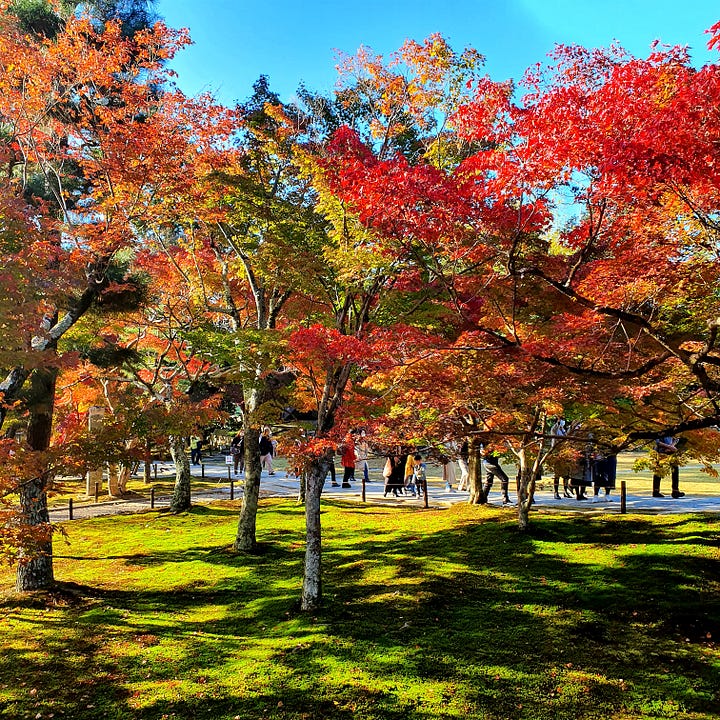
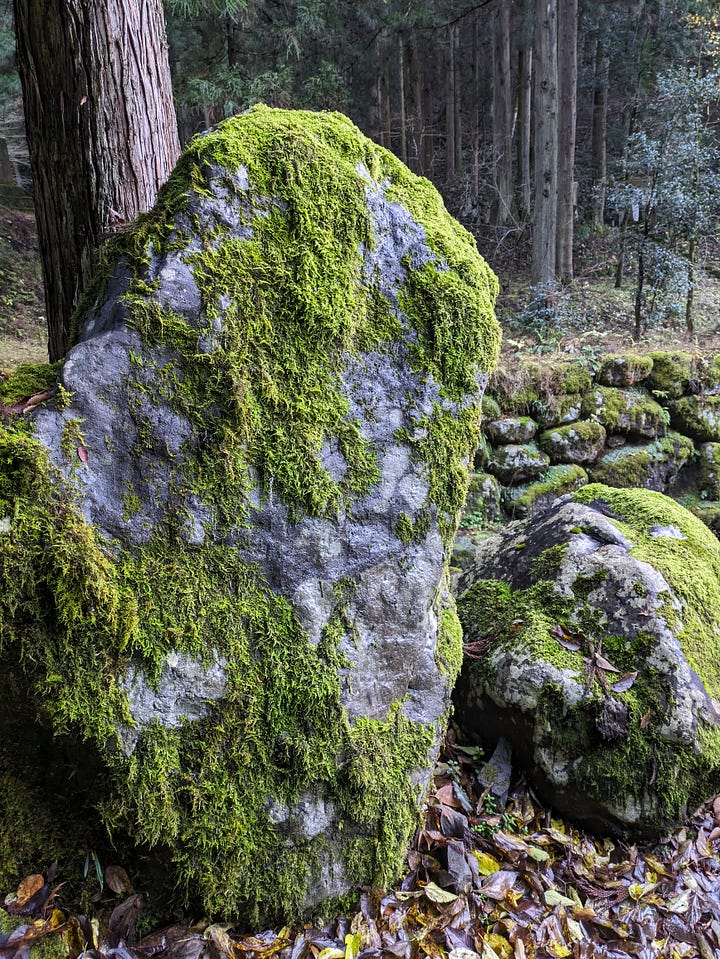
Kyoto is the great moss capital of Japan. At Saihō-ji, the famous Kokedera, where over 120 species of moss unfold across temple grounds, entry requires a reservation, a copied sutra, and willingness to walk slowly. Ginkaku-ji, Tōfuku-ji, and Rurikō-in follow suit, offering similarly sublime experiences. But moss is not a creature of exclusivity. It spills out into the world beyond the gates of these old temples and gardens. It is there on roadside stone walls, in forests, in deep mountain paths, and between the stones of back alleys.
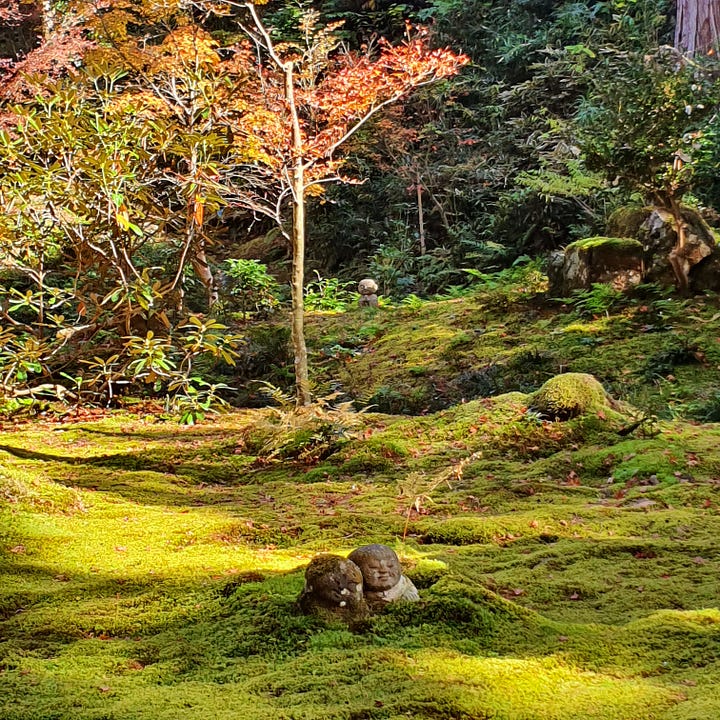
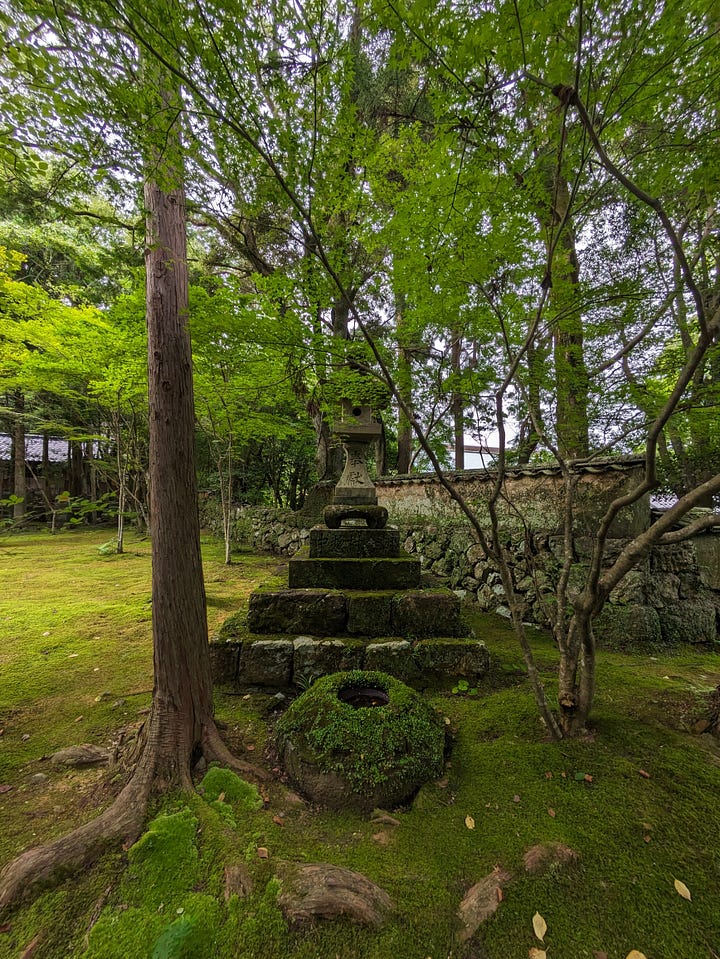
Elsewhere in the world, moss is often treated as a nuisance. On driveways, rooftops, and lawns, its appearance signals disrepair. The gardener, eyeing it with suspicion, brings out lime, rakes the soil, and exposes the surface to sunlight in a bid to sterilize it. But in Japan, moss is welcomed. It appears in The Tale of Genji, in the verses of the national anthem, and along the paths of countless temples and tea gardens.
Moss plays a crucial ecological role. It holds water, sometimes over twenty times its weight, releasing it slowly to prevent erosion and regulate moisture. It supports insects and amphibians, traps nutrients, and thrives where few other plants can. Peat moss (Sphagnum) is even used in medicine, wastewater treatment, and as fuel. Lately, moss has gained attention as a low-maintenance alternative to traditional lawns. Unlike grass, it needs no fertilizers or mowing, uses less water, and supports biodiversity. In places like the U.S. and Europe, where lawns are common, moss offers a more sustainable option.
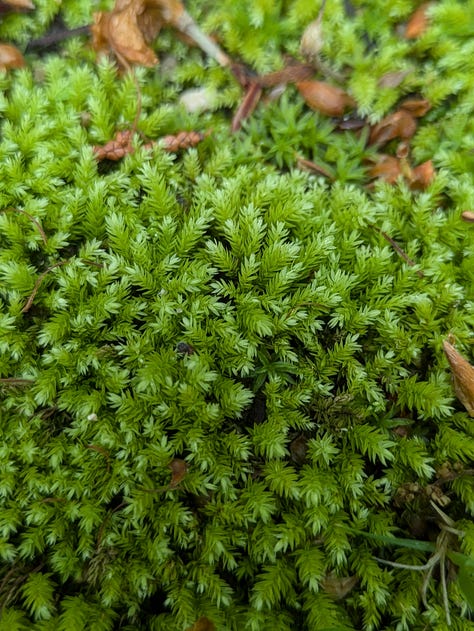
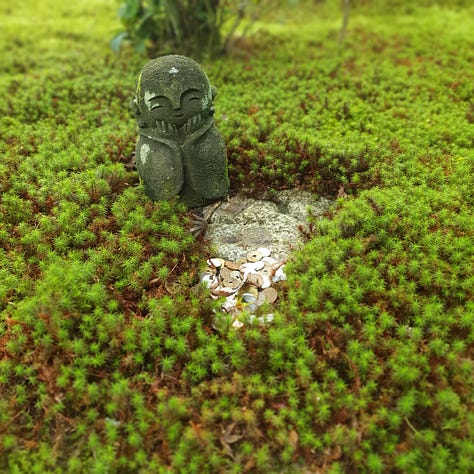
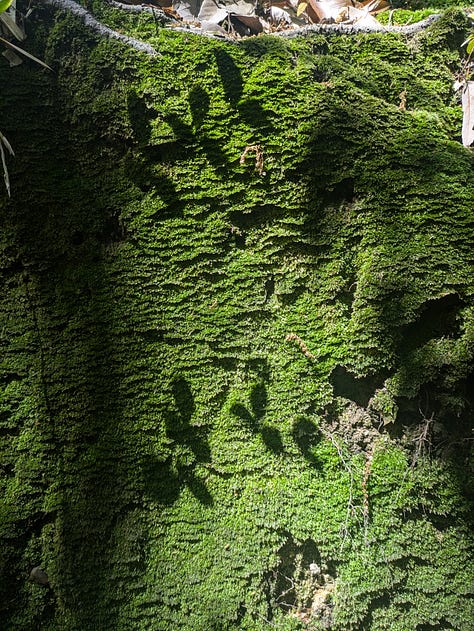
To observe moss is to slow down, to get low, and to look closely. With patience, you might find yourself face to face with an ancient organism, one that has seen countless changes and somehow, miraculously, gone on. It doesn’t offer lessons outright, but its presence as a fragile life form that exists somewhere between places, between what is visible and what is almost, is a reminder that what slips between definitions is still real. You might even find some guidance for modern life: adapt creatively, rest when needed, and remember to always, always stay hydrated.
References
EN
Nippon.com. (2021). Japan’s Emerald Carpets: The Cultural Importance and Environmental Promise of Moss.
https://www.nippon.com/en/japan-topics/b02350/japan%e2%80%99s-emerald-carpets-the-cultural-importance-and-environmental-promise-of-moss.htmlIUCN. (2000). Mosses, Liverworts, and Hornworts: Status Survey and Conservation Action Plan for Bryophytes (No. 074). Edited by Hallingbäck, T. & Hodgetts, N.
https://portals.iucn.org/library/efiles/documents/2000-074.pdfUC Davis Department of Plant Biology. (n.d.). Chapter 22: Bryophytes. In BIS 1C Course Textbook.
https://labs.plb.ucdavis.edu/courses/bis/1c/text/Chapter22nf.pdfGoffinet, B., & Shaw, A. J. (Eds.). (2008). Bryophyte Biology (2nd ed.). Cambridge University Press.
JP
烏賀陽 百合(うがや ゆり). 『京都、美しい苔庭散歩』.(講談社)
苔と生態研究会 (Moss Ecology Society of Japan). 苔の魅力と種類.
https://www.moss-ecology.jp/cont11/main.htmlナショナルジオグラフィック日本版 (National Geographic Japan). 苔が地球を救う? ひっそり広がるミクロの森.
https://natgeo.nikkeibp.co.jp/atcl/web/15/427954/080400005/Hattori Laboratory (服部植物学研究室). Website: https://hattorilab.org
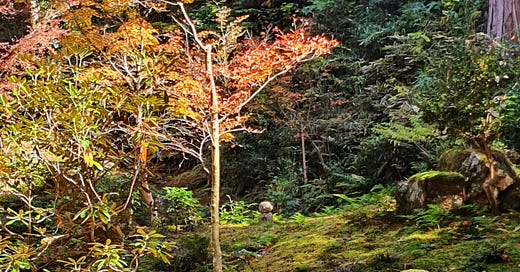


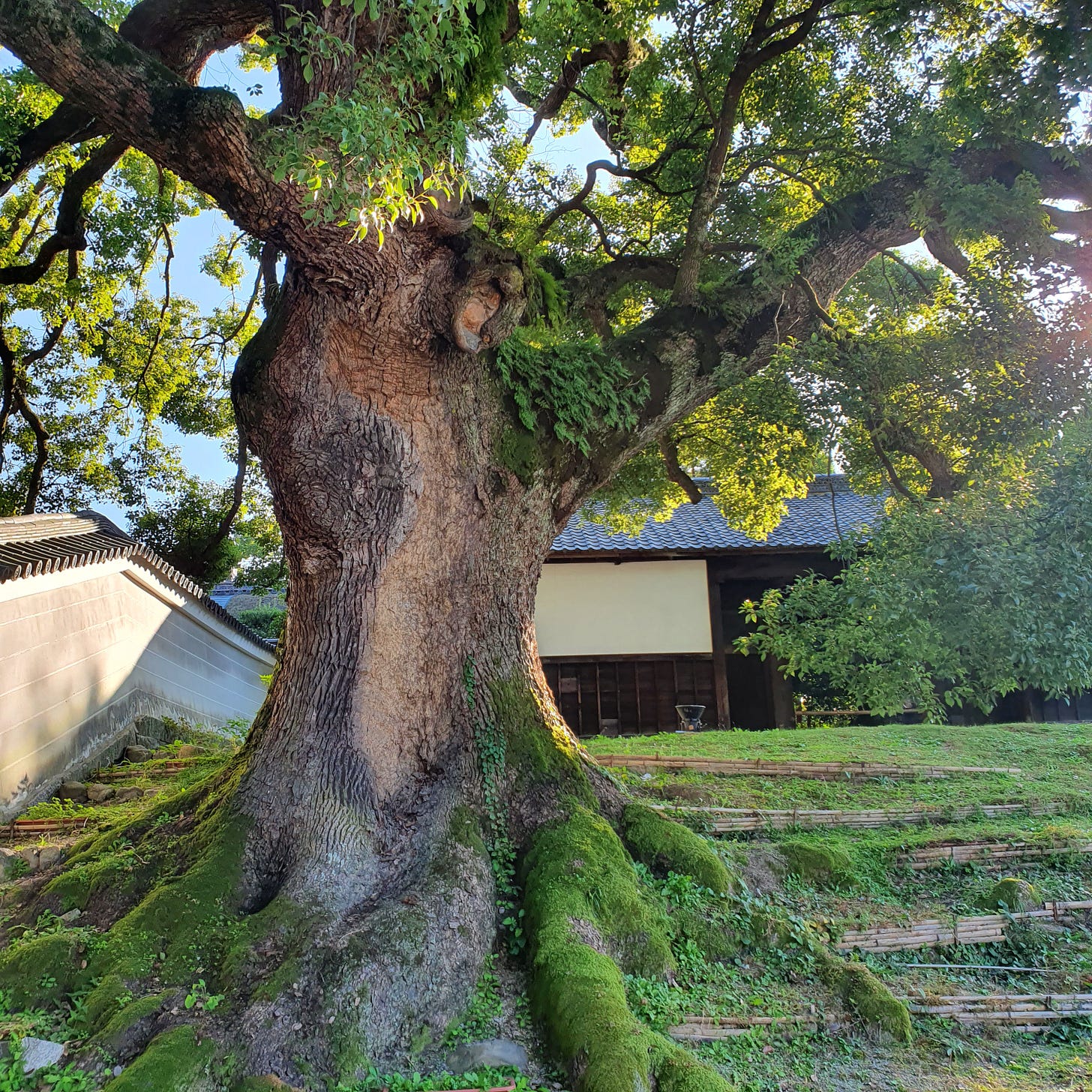
Beautiful piece. I’ve never given much consideration to moss before, but reading your points has made me reconsider my opinion on them somewhat—or rather, my lack of any opinion at all of them.
I love moss. So fascinating. Yes you have to take the time to really look closely and understand how unique it is. When I am hiking and find a nice patch I always have to stop and take a closer look. And a gentle pet.